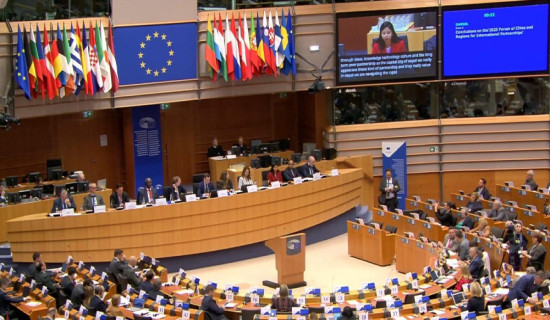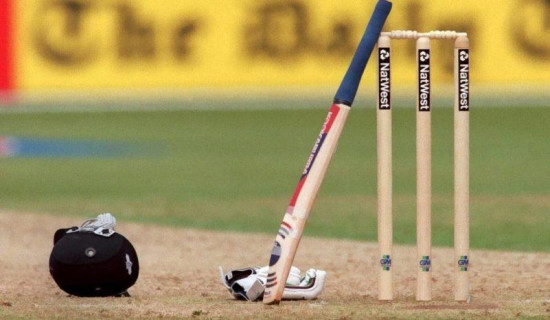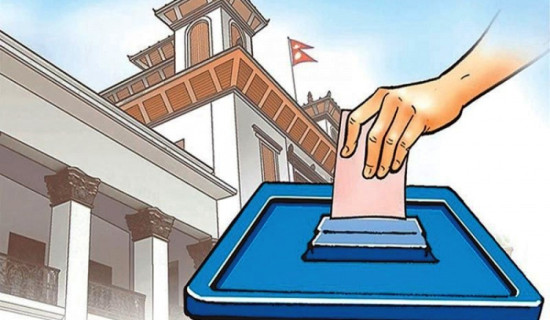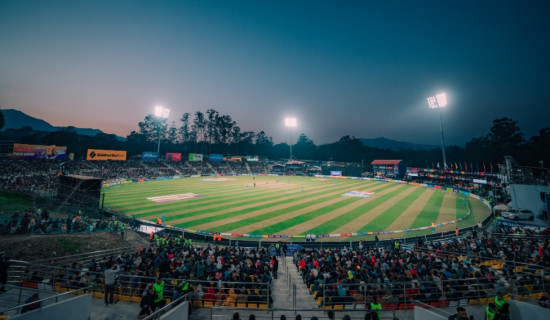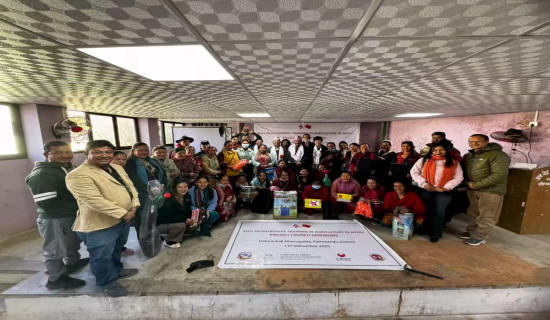- Saturday, 13 December 2025
Getting Rid Of Garbage Mess For Good
Many developing countries are presently facing severe environmental degradation and health risk associated with mismanagement of domestic waste. The overall status of garbage problems is now a challenging ecological issue in Katmandu. Over the past decade, the Katmandu Valley has encountered rapid population growth, dumping of garbage near water bodies, unplanned waste disposal, excessive urbanisation, and an imperfect solid waste management system. In addition, issues in the reliable waste management systems have now encountered a lack of public understanding of the stable waste system, unplanned urbanisation, the introduction of environmentally unfriendly commodities, and changing consumer habits.
Crucial role
The Kathmandu Metropolitan City (KMC) is a tiny area with more than a million individuals. The garbage management system is mainly a door-to-door waste pickup service by KMC. Still, much garbage is unmanaged and ends in rivers or dumped near streets. A landfill site near Kathmandu is said to have already reached capacity despite a spread of over 37.65 hectares. According to KMC, the Kathmandu Valley generates about 853 tons of waste daily and 70,080 tons annually. The Ministry of Urban Development (MoUD) plays a crucial role in developing plans and policies, including sanitation and drainage. For Katmandu, the KMC Office is the principal jurisdiction in executing the solid waste management (SWM) system.
The majority of households (89 per cent) want to segregate the organic and non-organic portions of their waste. Lack of proper lining, raw solid waste from the city's dumpsites leaches into river water, causing contamination and degrading the quality of the water. Despite the initial effort made by the newly-elected Mayor of KMC Balendra Shah, city dwellers are still facing many problems due to garbage. Tourists suffer from the bad smell while passing the massive piles of rubbish. Every day, the 18 municipalities in KMC generate over 1,200 metric tons of solid waste. Recently, as the Bancharedanda road has been under construction, Kathmandu has now been unable to collect garbage for several days.
With continuous growth in population density and urbanisation, waste generation in Katmandu is rising dramatically. In 2014, the Ministry of Health and Population had identified SWM as the country’s most crucial challenge. There is only one waste collection and transfer station at Teku, where wastes from Kathmandu and other cities are transported. This station transports waste to the Bancharedanda Landfill now. Kathmanduites have been facing problems with garbage transportation during rainy and monsoon seasons along the 27-km road that stretches to Sisdole and Bancharedanda. Because of the rainy season and transport issues, the city uses 40,000 square feet of plastic tarp to cover the ever-growing garbage problem at Teku transfer station.
The segregation of garbage is also a big problem. Furthermore, many remote areas and slums of Katmandu do not have sufficient financial capacity to collect and manage waste. Moreover, open dumping is a common practice in Kathmandu. As a result, waste is scattered on roads, drainage, and open spaces. To solve the problem of garbage segregation, a pilot project was started in 2020 but did not work correctly. Besides municipal solid waste, healthcare waste is another major challenge for KMC. According to the Health Management Information System of Nepal, within the small city of Kathmandu, the number of registered public and private healthcare facilities (HCFs) in 2019 is more than 1,070 and combined with unregistered HCFs, the number is around double, and these HCFs produce more than a ton of hazardous wastes.
In addition, Metro City Waste Management picks up on-hazardous waste generated from these HCFs. Still, no central management system is practised for dangerous wastes in the KMC. Moreover, few HCFs are individually practising incinerations for hazardous waste; in many cases, body parts have been found to mix with general waste. Nepal has adopted numerous legal facilitating regarding solid waste management in KMC, for instance, Solid Waste (Management and Resource Mobilisation) Act and rules, 1987, Solid Waste Management National Policy, 1996, Solid Waste Management Act, 2011 and Solid Waste Management Rules 2013. Despite having laws and policies, KMC has considerably not guaranteed a sound management system primarily because of a lack of economical implementation of actions and policies.
Eventually, the garbage situation within Katmandu has reached a critical level. KMC has now taken initiatives to work with private agencies for solid waste management systems like private sector participation (PSP) as a crucial role for SWM. But unfortunately, it is not working well due to insufficient funding. According to the world population review (2021), like other cities, Katmandu will protect its individuals by providing a healthy environment, a good solid waste management policy and economic opportunities. In some areas of Katmandu, private organisations and local communities work together for waste management.
Suggestions
In conclusion, KMC must integrate solid waste management from collection to final disposal to minimise environmental impacts and facilitate clean city and resource recovery materials. It is necessary to sort waste at home before taking it to a waste container and create good collection points and sorting containers. Sorting should be based on biowaste, paper, cartoon, glass, metal, plastic, mixed waste. There is also need to create separate collection points for hazardous waste, e.g. batteries, broken computers, electrical equipment.
We should learn from Scandinavian nations like Finland and Sweden on how to implement an efficient waste management system where the overarching mission is simple - to stop sending waste to recycling in the first place. Finally, KMC must plan to transform the waste disposal system from open dumping to an engineered landfill site which may require investment with a commercial vision to address and align tech, policy, and environmental possibilities. Hopefully, with everyone's concerted efforts, Kathmandu will become garbage-free metropolis, where sustainability and a smart city vision can prosper in the future.
( Kalwar holds a PhD in Science from Lappeenranta University of Technology, Finland.)









